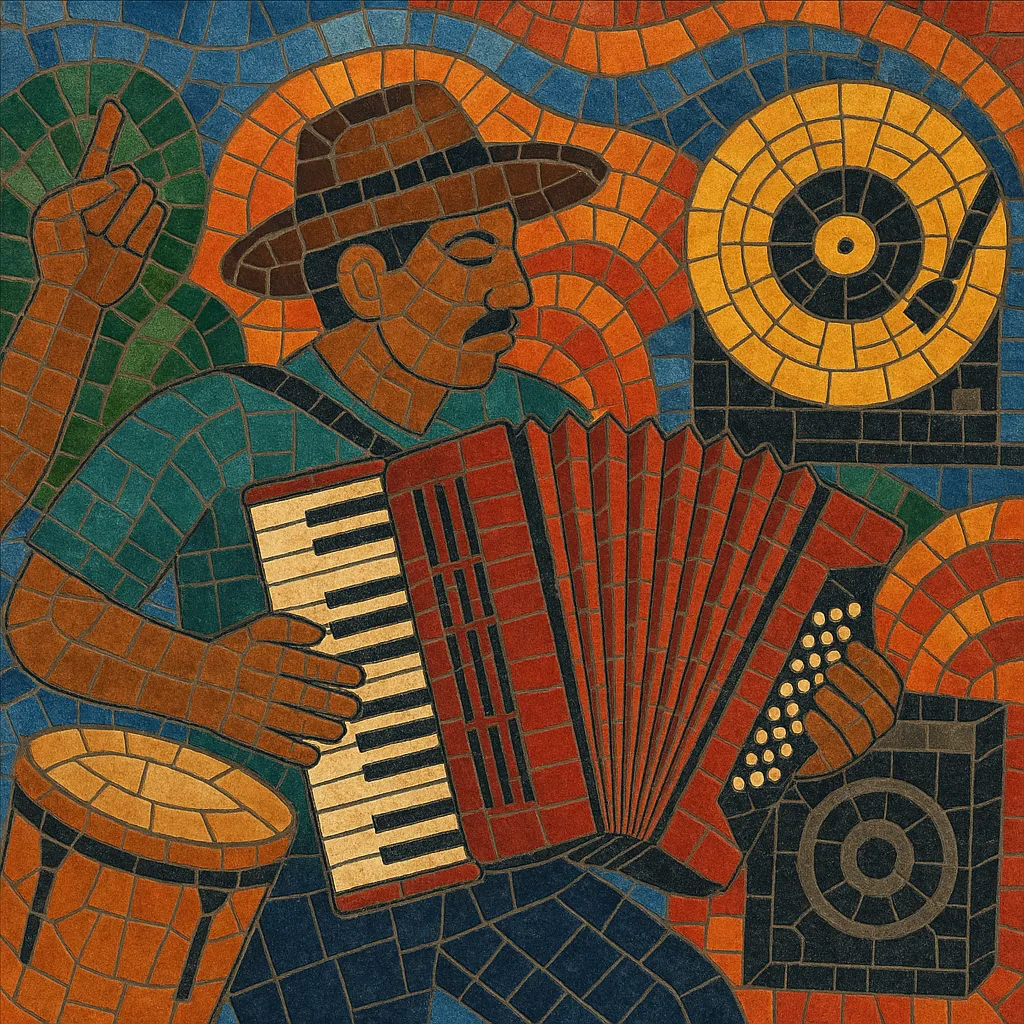Cumbia sonidera is a Mexican urban style of cumbia shaped by the neighborhood sound-system (sonidero) culture of Mexico City and Puebla. It features mid-tempo grooves, prominent electronic keyboards or accordion doubling the melody, punchy bass lines, güiro and timbales/congas, and heavy use of echo, reverb, and DJ shout-outs (saludos y dedicatorias).
Built for social dancing and open-air parties, the style blends Colombian cumbia roots with Mexican popular and grupera sensibilities. Its signature is not only musical—it's the live performance practice: extended mixes, segues between tracks, and a charismatic MC steering the dance floor with dedications, drops, and dub-style effects.
Cumbia sonidera emerged in the 1970s in working-class barrios of Mexico City (notably Iztapalapa and the eastern metro area like Nezahualcóyotl) and Puebla. Local sound-system operators—called sonideros—imported Colombian cumbia records and adapted them to Mexican dance floors, adding spoken introductions, dedications, and copious echo and reverb.
Through the 1980s, sonideros standardized a mid-tempo, keyboard-forward sound that was easy to mix at parties. Bands and studio projects tailored arrangements for this context, foregrounding synth leads, accordion lines, güiro, and timbales. In the 1990s, Mexico City cumbia acts (e.g., Los Ángeles Azules, Yaguarú) brought the barrio aesthetic to national stages, while the neighborhood parties kept the raw sonidero format alive.
As Mexican diaspora communities grew in the U.S., cumbia sonidera traveled to cities like New York, Chicago, and Los Angeles, where sonidero dances flourished. The genre influenced slowed-down practices (feeding into cumbia rebajada), and informed digital/Netlabel-era producers who fused it with electronics (digital cumbia) and with reggaetón (cumbiatón). Today, the style remains a living party tradition—equal parts repertoire and performance technique.
Beyond sound, cumbia sonidera is a social technology: a neighborhood bulletin board, dedication system, and dance pedagogy. Flyers, hand-painted speaker stacks, and the MC’s voice form an aesthetic that is as iconic as the rhythm itself.


